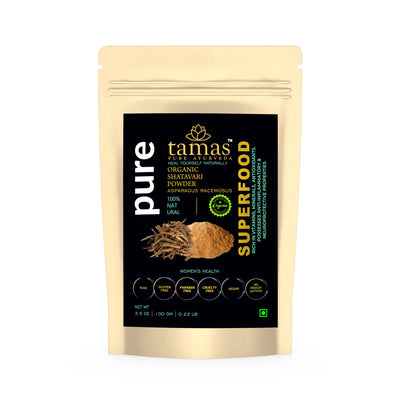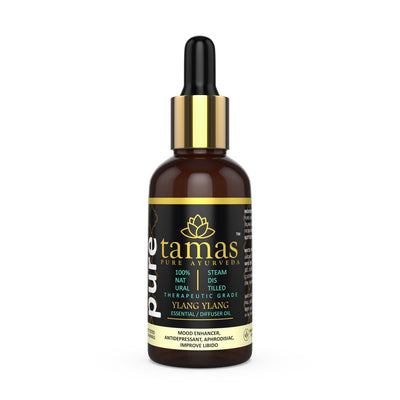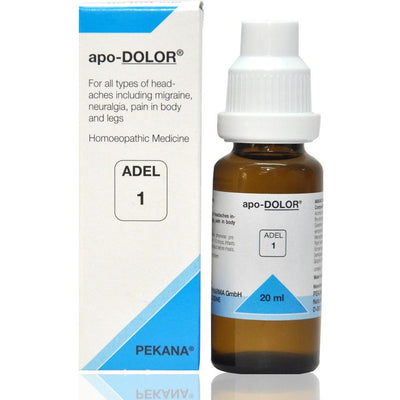
Eladi Keram
Eladi Keram is a formulation that is part of treatment in Ayurveda for skin diseases and skin pigmentation and blemishes. It is made of ingredients that help maintain optimum skin health through topical application. It is also used to treat skin allergies, rashes, and itching. It also acts as an Ayurvedic blemish treatment solution and antiseptic to treat skin issues that are caused by toxin buildup. Eladi Keram helps to treat skin conditions caused by vitiated Vata and Kapha Doshas.
Ingredients
Kera Thaila (Cocos nucifera)
- Calms Pitta and Vata problems and supports Kapha dosha
- Quickens the process of skin repair
- Is useful in the treatment of skin problems such as eczema
- Supports wound healing
- Easily imbibes qualities of the herbs that are processed in it
Ela yugma (Ela + Sthula Ela) (Elattaria cardamomum & Amomum subulatum)
- Black cardamom
- Is useful in the treatment of skin diseases in Ayurveda
- Is used in traditional medicine to relieve pain
- Is used in Ayurveda as an antimicrobial, anti-inflammatory and antioxidant.
Sallaki (Boswellia serrata)
- Frankincense oil
- Is used in Ayurvedic medicine for pain relief
- Balances Kapha and Pitta doshas
- Is used in Ayurveda for healing skin disorders and abscesses.
- Is used to improve the efficacy of skin problems.
- Is used as an anti-inflammatory
Kushta (Saussurea lappa)
- It pacifies Vata and Kapha imbalances.
- This herb is useful in the treatment of gout, rheumatic and skin diseases.
Phalini (Callicarpa macrophylla)
- Controls the bleeding of wounds
- Used in Ayurveda as a blood purifier, anti-bacterial, wound healer and to treat skin diseases
- Decreases Pitta
Manchi (Cyperus malaccensis)
-
Is used in Ayurveda to cure sores
Jala (Coleus zeylanicus)
- Country Borage
- Reduces vitiated Kapha and Vata Doshas
- Is used in Ayurveda as an antimicrobial, anti-bacterial, anti-fungal, cytotoxic and antioxidant.
Dyamaga (Actiniopteris dichotoma)
- Used as a styptic and anthelmintic
- Useful in skin diseases
Sprikka (Anisomeles malabarica)
- Useful in skin diseases
- Balances three Doshas
- Antibacterial and analgesic
Choraka (Cymbopogon martinii)
- Useful in skin diseases, itching and pain
- Used as an anti-bacterial and antioxidant
Kachola (Kaempferia galanga)
- Is a pain reliever
- Is used in traditional medicine as a stimulant, expectorant, carminative, diuretic and in respiratory ailments.
Tvak (Cinnamomum zeylanicum)
-
Is used in traditional medicine as a carminative, astringent, haemostatic, antiseptic, antispasmodic and expectorant.
Patra (Cinnamomum tamala)
-
Treats inflammation
Tagara (Valeriana wallichii)
- Used in Ayurveda to treat weakness and wounds
- Balances all the three Doshas
- Controls the toxins in the body
- Is used in Ayurveda as a rejuvenative
Sthauneya (Taxus baccata)
- Is used in Ayurveda for its antirheumatic, anticatarrhal and wound-healing properties.
Jathi (Myristica Fragrans)
- Nutmeg
- Anti-inflammatory
Myrrah (Balasamondron myrrah)
- Is used in Ayurveda as an emmenagogue, anti-inflammatory, antiseptic, antibacterial, antiviral, astringent, stimulant, expectorant, stomachic, carminative and leucocytogenic.
- It is a blood purifier and is used externally for treating acne, boils and pressure sores.
Suradaru (Cedrus deodara)
- Balances the Kapha and Vata Doshas
- Relieves the Ama in the body
- Relieves swelling and used in Ayurveda as an anti-inflammatory
Agaru (Aquilaria Agallocha)
- Is used in traditional medicine as an astringent, carminative, antiasthmatic and antidiarrhoeal, antidysenteric.
- Is used to treat skin diseases
Srivasaka (Gum From Acacia)
- Is one of the most powerful Ayurvedic ingredients used to treat skin diseases
Kumkuma (Crocus sativus)
- Saffron
- Is used in Ayurveda as an immunity enhancer and memory booster
- Is useful in treating skin diseases and acne
- Improves the complexion
- Useful in wound healing
Chanda (Costus speciosis)
- Is used in Ayurveda as a blood purifier and to treat skin diseases and abscesses
Guggulu (Commiphora mukul -gum)
- Used in Ayurvedic medicine for its wound healing properties
Devadupa (Canrium strictum)
- Is used to pacify vitiated Kapha and Vata Doshas.
- Is used to treat skin diseases such as psoriasis.
Pura (Commiphora wightii)
- Anti-inflammatory
Punnaga (Calophyllum Inophyllum)
- Is used to treat abscesses and skin disorders
- Relieves the metabolic waste Ama
- Reduces vitiated Kapha and Pitta Dosha
Nagapushpa (Mesua ferrea)
- Anti-inflammatory
The skin is the largest organ in the human body. Most times we are more concerned with the cosmetic appearance of our skin rather than its functionality. The skin is a very versatile and multifunctional organ. It is the barrier between the body and its surroundings. The skin functions to regularise our body temperature and also as a sensory organ that receives stimuli from around us. Vitamin D is synthesized from sunlight by the skin.
Good health usually results in skin that is glowing and healthy. Some skin conditions are mild and easily treated while others can be extremely uncomfortable, painful or even life-threatening. Skin problems are known to be difficult to treat and need sustained long-term treatment to show results. Cosmetic problems with skin may not be uncomfortable but have a great impact on a person’s self-confidence. For patients who wonder how to remove blemishes fast, Eladi Keram is one of the best topical treatments in Ayurveda for the skin. It is used to treat skin diseases as well as in Ayurvedic treatment for pigmentation on the face. It improves the look of the skin and also treats and prevents common skin conditions.
Ayurveda and The Skin
Ayurvedic doctors can judge the general health of a person by observing their skin. Healthy people with well-balanced Doshas generally have glowing skin. Imbalance in any of the Doshas affects the skin in different ways. Since the Vata Dosha is dry and airy it makes the skin dry and rough accompanied by prickling and pain. Skin that is affected by a Pitta imbalance is red and coppery and suffers from ulceration accompanied by oozing. Acne is a Pitta related problem. Kapha imbalance causes pale skin with itching and oiliness.
The buildup of metabolic waste called Ama also adds to skin problems by its interaction with the Bhrajaka Pitta or skin. This causes skin blemishes and discoloration. The tissue groups that impact the skin are Rasa (plasma), Rakta (blood), Lasika (lymph), and Mamsa (muscle) Dhatus. If the skin disease is prolonged it might also involve other Dhatus.
The Ayurvedic approach to how to get rid of blemishes and acne scars is to balance the Doshas and eliminate toxins from the body. Topical treatments help to rejuvenate the skin, improve its appearance, fight infections and remove dark blemishes on the face and other parts of the body.
Western Medicine’s View on Skin Problems
- Skin is prone to get unhealthy when irritated or affected by allergies, infections, inflammation or irritation.
- Skin problems can manifest in a part of the body or all over and can either be permanent or chronic.
- Some people have skin issues at birth while others suddenly occur later in life. Some skin problems have a high rate of recurrence long after they have been successfully treated.
- Skin diseases that cannot be fully cured need to be managed. Rosacea, vitiligo, and psoriasis are conditions that are lifelong.
- Skin issues are more likely to occur when a person has a weakened or compromised immune system.
- Problems with the kidneys or the thyroid can also cause skin problems.
- Skin problems that are caused by infections can be due to viruses, fungus, bacteria, microorganisms or parasites. Such skin problems are very easily transmitted to others and have to be carefully managed.
- One of the most frequently found forms of skin trouble is contact dermatitis. This occurs when the skin has made contact with an irritant that causes it to become red and irritated.
- Sometimes allergic reactions in the body appear on the skin as urticaria or hives. This allergic reaction is caused by antibodies that are in the bloodstream as an immune reaction to an irritant. This is a temporary condition that is treated by avoiding further contact with the irritant and treatment with an antihistamine. In milder cases, it resolves without medication.
- A genetic skin condition that is most often found in children is eczema. It causes rashes that are very itchy and ooze in the skin folds and joints of the body. It is found to get better as the child grows older.
- Psoriasis is a chronic skin disease that has no permanent cure and has a tendency to suddenly flare up and then go away in turns. It is a genetic condition that is characterized by plaques and scaly patches that are formed at the elbows and knees as well as other parts of the body. It. Since it is caused by inflammation in the body, a patient who suffers from psoriasis has a higher risk of developing other health problems that are caused by inflammation such as cardiovascular disease.
- Some skin problems are not because of medical issues but are undesirable cosmetic variations from the norm. Problems with the appearance of the skin include blemishes and pigmentation problems. Blemishes are generally harmless. However, they can cause worry when they are perceived by the patient to be unsightly or unattractive.
- Acne is one of the most common blemishes that affect people.
- Age spots are a type of hyperpigmentation that occurs with exposure to the sun. it is usually found in older people.
- Melasma is a condition when there are brownish patches on the skin and it usually occurs during pregnancy.
- Some infectious skin problems cause blemishes on the skin.
- It is also found that inflammatory problems with the digestive tract cause skin problems.
- There are skin problems that particularly affect people with diabetes as well as autoimmune diseases such as Lupus.
- Stress and hormonal problems can cause skin issues.
- When there are underlying health issues that are causing issues with the appearance of the skin, the causative problem is treated.
- Other treatments for skin blemishes and pigmentation problems include steroids (corticosteroids and androgenic steroids), salicylic acid, hydroquinone and other drugs that are applied to the affected area.
- Surface treatments such as cryotherapy, laser therapy, micro-needling, chemical peels, and microdermabrasion are used to improve the skin’s appearance and to fade blemishes.
- Lifestyle changes such as a healthy diet, good habits, and sunscreen use are recommended by doctors so that patients have enough balanced nutrition for optimum skin health.



















